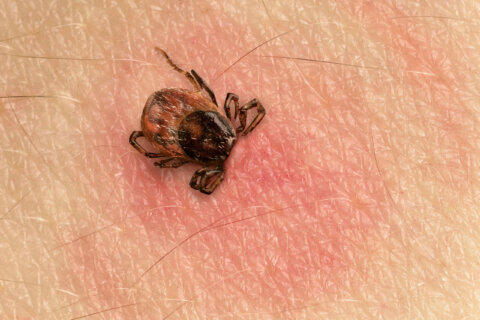Hearing that you have something abnormal on a lung scan or chest X-ray is scary. The first thing you probably assume is that you have cancer. While that may be true, it’s far more likely that the worrisome finding is something less serious. It’s actually very common to find a nodule, or small mass. It appears as a shadow or spot on a medical imaging scan.
According to the American Thoracic Society, these nodules have several likely causes, including scar tissue from an old infection you might not have realized you had or an irritation from something in the environment. The ATS says up to one half of adults who get a chest X-ray or CT scan have a nodule; most of these are very small and don’t cause pain or breathing problems.
It makes sense, when you think about it. “A baby is born with perfect skin,” says Dr. Marc Feinstein, a pulmonologist at Memorial Sloan-Kettering Cancer Center in New York. “As a person ages, they get scars, age spots, freckles. Few of these are melanoma [a form of skin cancer], however.” It’s the same way with the lungs. Fortunately, although these abnormalities might mimic lung cancer on an imaging test, most are not actually lung cancer.
[See: What Not to Say to Someone With Lung Cancer.]
So, How Do You Know if It’s Lung Cancer?
There are three ways you can learn you have lung cancer, says Dr. Luis Herrera, medical director of the Rod Taylor Thoracic Care Center at UF Health Cancer Center — Orlando Health:
— You have symptoms and see your doctor, who then finds a suspicious mass on a CT scan or X-ray. However, Herrera says, 85 percent of people with lung cancer never have symptoms. Furthermore, lung cancer symptoms, such as a persistent cough, back pain or weight loss, can resemble a cold or bronchitis and may not raise suspicions of lung cancer. However, Herrera says, if you have symptoms like these that don’t go away in a few weeks, seek medical attention.
— You undergo a chest X-ray for an unrelated reason (for example, before surgery), which indicates a spot in your lung.
— Because you were a heavy smoker, you participate in lung cancer screening.
Exactly how lung cancer is discovered is relevant because implementing screening for people at high risk of lung cancer means more people are finding something on their lungs. Often, the finding is a false positive: The scan appears abnormal, although the individual doesn’t actually have cancer.
In the National Lung Screening Trial, nearly 54,000 people ages 55 to 74 with a history of heavy smoking (which is considered a high risk for developing lung cancer) were screened either with a standard chest X-ray or with low-dose helical computed tomography. The trial revealed that CT scans were better than X-rays at finding early stage lung cancers. Participants who received low-dose CT scans had a 15 to 20 percent lower risk of dying from lung cancer than participants who received standard chest X-rays (since the trial, this reduction in lung cancer mortality has been updated to 16 percent).
However, the false positive rate from screening is nearly 25 percent. That means approximately 1 in 4 people who are screened over three rounds of screening exams will have an abnormal finding. Of those, 96 percent will not have lung cancer.
[See: 7 Things You Didn’t Know About Lung Cancer.]
Feinstein says the trick is to distinguish benign nodules from malignant ones. Oncologists must determine if an abnormal finding may in fact indicate lung cancer and warrant further analysis. If the individual is a heavy smoker, an abnormality is more worrisome than one in a non-smoker. Feinstein says doctors also look at the characteristics of the spots. “If it’s very big [10 centimeters or larger], it’s more likely to be cancer,” he says. “If it has irregular borders, it’s more likely cancer.”
If the abnormality does not have characteristics that immediately suggest lung cancer, physicians can do follow- up scans to see if the nodule changes — for example, grows — over time. The ATS says most lung cancers grow slowly, so it’s usually OK to wait for the next CT scan before doing additional tests. Plus, doing a biopsy on a small nodule could cause adverse effects, such as a collapsed lung or infection.
The high rate of false positives in lung cancer screening is concerning to some health professionals. In an editorial in JAMA Internal Medicine, several doctors made the point that false positives can lead to additional, potentially invasive and risky diagnostic procedures to determine if cancer is present. The authors wrote: “For every 1,000 people screened, 10 will be diagnosed with early-stage lung cancer (potentially curable), and five with advanced-stage lung cancer (incurable); 20 will undergo unnecessary invasive procedures directly related to the screening; and 550 will experience unnecessary alarm and repeated CT scanning, [which is associated with radiation].”
[See: 7 Innovations in Cancer Therapy.]
Who Should Be Screened for Lung Cancer?
The U.S. Preventive Services Task Force and American Thoracic Society recommend annual screening for lung cancer with low-dose computed tomography in adults 55 to 80 who have a 30 pack-year smoking history (a pack year means you smoked one pack per day for 30 years or the equivalent) and currently smoke or quit within the past 15 years. If you have a history of heavy smoking, talk to your doctor about the pros and cons of lung cancer screening. Of course, the prognosis for lung cancer is best when you detect it early, Herrera says, in which case, you should consult with a lung cancer expert to ensure you’re properly evaluated and treated.
More from U.S. News
7 Things You Didn’t Know About Lung Cancer
What Not to Say to Someone With Lung Cancer
7 Innovations in Cancer Therapy
Is It Lung Cancer or Something Else? originally appeared on usnews.com







